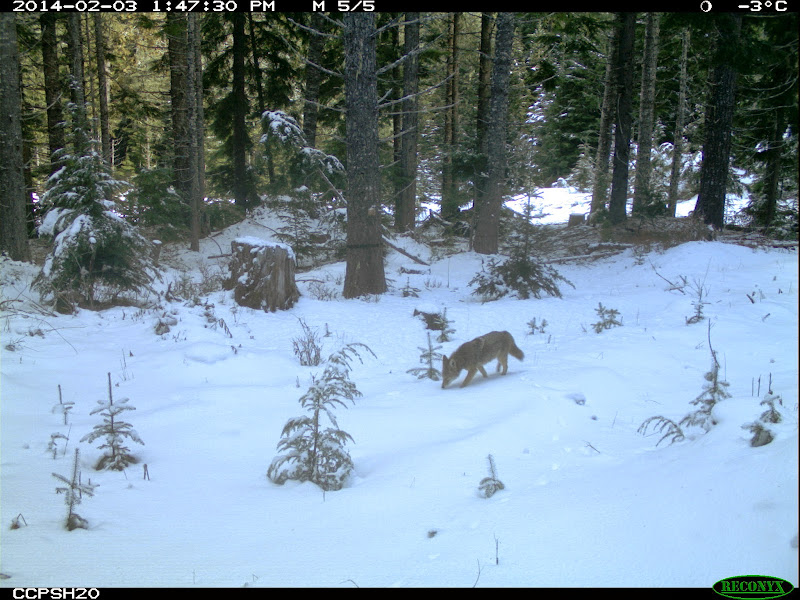This past winter, we experimented with camera surveys at and below the lower elevation bound of where we expect to find Cascade red foxes. Officially their distribution is set at 3000 to 7000 ft. However from our 200++ surveys throughout the southern half of Washington, spanning Mt Adams to Norse Peak, we have not detected these mountain foxes below 4200 ft . They have been seen as high as, well, the top of Mt. Rainier - the highest peak in their range. Generally, they occur as high as the upper subalpine and a little above where they forage in subalpine and alpine meadows and tree copses, on talus slopes, and along the base of cliff bands.
We wanted to gather some more data on how low they occur so we set 16 cameras between 2500 and 3900 ft. We don't have data back from the two 3900 ft cameras yet but all the rest yielded detections only of coyote, mountain lion, and bobcat. This absence of foxes is helping to clarify their distribution and aid in understanding where foxes live, what type of habitat variables they need for their persistence, and ultimately how predicted future climate scenarios will impact their distribution.
The coyote is the major predator and competitor of lowland red foxes and it is thought that the mountain foxes, the Cascade red fox and its Sierra Nevada and Rocky Mountain cousins, inhabit marginal, high-elevation habitats as a refuge from competition with coyotes. The new set of camera surveys will be plugged into a habitat model to investigate this coyote avoidance hypothesis.


